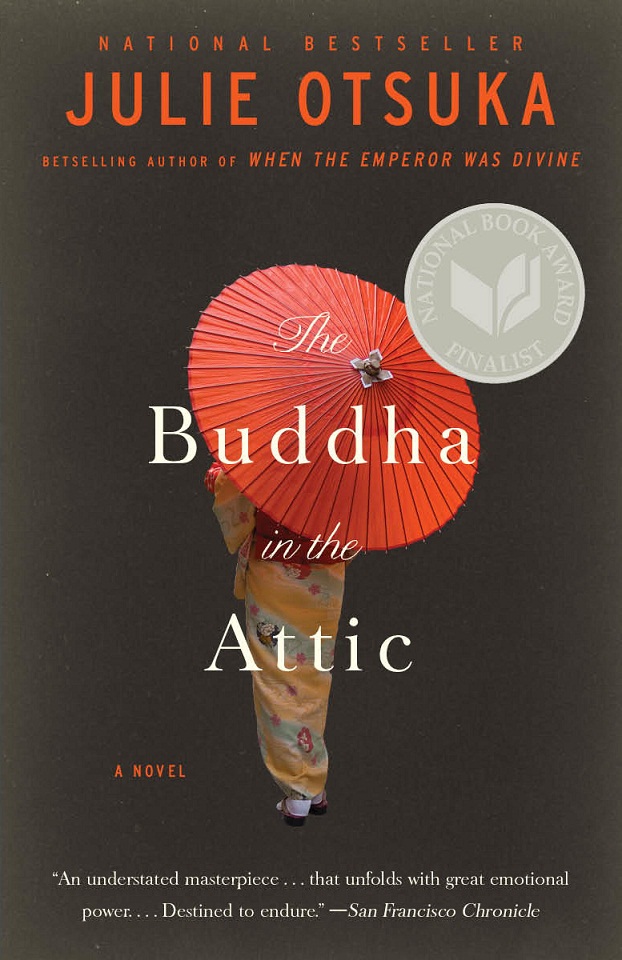You don’t think it’s possible, but this book is like nothing you’ve ever read before. And it’s so good.
That’s what my mama told me when she handed me The Buddha in the Attic by Julie Otsuka, and I was a little skeptical. No really, she insisted. You think you’ve read every writing style out there, but this one is different and you will love it.
Turns out, per usual, she was right.
The book is about Japanese picture brides coming to America after WWI, and their lives in the US – marriage, children, WWII, Japanese internment and afterwards. Picture brides are much like mail-order brides. They were set up by a “matchmaker” who used pictures to match immigrant workers with women from their homeland.
- “On the boat we could not have known that when we first saw our husbands we would have no idea who they were. That the crowd of men in knit caps and shabby black coats waiting for us down below on the dock would bear no resemblance to the handsome young men in the photographs. That the photographs we had been sent were 20 years old. . . . That when we first heard our names being called out across the water one of us would cover her eyes and turn away — I want to go home — but the rest of us would lower our heads and smooth down the skirts of our kimonos and walk down the gangplank and step out into the still warm day. This is America, we would say to ourselves, there is no need to worry. And we would be wrong.”
- “On the boat we carried…silver mirrors given to us by our mothers, whose last words still rang in our ears. You will see: women are weak, but mothers are strong.”
It’s border-line poetry, but poetry with a story, told in first person plural. Otsuka writes a long melancholy poem about love and loss. Or more like 30 (50? Countless?) parallel poems echoing one another and rolling from themed refrain to themed refrain – Come Japanese, First Night (woah seriously this chapter is a must-read), Whites, Babies, Children, A Disappearance. [When I was in school in California, we were still barely talking about Japanese internment – I still don't know if it's taught at all in State and/or US history, but it should be!]
All the stories are mixed up to together paint a complete picture of the picture brides’ experience. It's kind of like impressionist art that doesn’t look like anything close up, but from far away you see what the artist wants you to see.
I thought the style would annoy me, when I realized that every sentence started and ended a new story, but then I found myself settling into the rhythm and rolling along, building my reading momentum, along with the unfolding many many many tales.
The book is short (144 pages) and I could not put it down. Some sentences were so powerful that I read them a couple times, just to fully process all the author packed into so few words. I’ve never felt so attached to characters whose names I don’t know and who all I have of their lives is one discreet sentence.
You MUST read this book. Actually, writing this post makes me want to re-read it asap...
And in case you’re not sold by my review, you can read the first chapter, “Come Japanese,” here.


